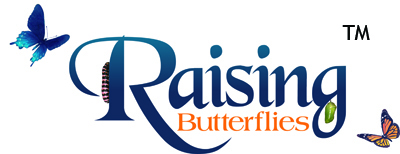Finding Caterpillars > Skipper Nests
Another difference between skipper larval nests and moth larval nests is that skippers will exit their rolled-up leaf nest in order to launch frass whereas most moth caterpillars do not. In other words, if you find a rolled-up leaf nest with frass inside the nest, it was created by a moth caterpillar; not a skipper caterpillar.
-
Pyrgus centaureae loki Third Instar
Grizzled skipper third instar caterpillar begins silking its leaf together in order to build a nest for shelter.
-
Pyrgus centaureae loki Third Instar Caterpillar
Slide two of five showing a grizzled skipper silking its leaf together with slik strands.
-
Pyrgus centaureae loki Third Instar Caterpillar
Part three of five.
-
Pyrgus centaureae loki Third Instar Caterpillar
Part four of five.
-
Pyrgus centaureae loki Third Instar Caterpillar
Part five of five.
-
Silver Spotted Skipper nest
Epargyreus clarus clarus fifth instar caterpillar is constructing a nest on Robinia pseudoacacia (black locust.)
-
Silver Spotted Skipper Nest
Epargyreus clarus clarus fifth instar caterpillar hides inside a nest on Robinia pseudoacacia (black locust.)
-
Meridianus Duskying fifth instar caterpillar
An Erynnis meridianus fifth instar larva leaves its nest to feed on lab host Quercus alba.
-
Meridianus Duskywing nest
An Erynnis meridianus fifth instar larva hides within its nest on lab host Quercus alba.
-
Pacuvius Duskywing Fifth Instar Caterpillar
An Erynnis pacuvius lilius fifth instar larva leaves its nest to feed on native host Ceanothus velutinus.
-
Pacuvius Duskywing fifth instar nest
An Erynnis pacuvius lilius fifth instar larva hides in its nest on native host Ceanothus velutinus.
-
Persius Duskywing Fifth Instar Caterpillar
An Erynnis persius fredericki fifth instar larva leaves its nest to feed on native host Lupinus argenteus.
-
Persius Duskywing Fifth Instar Nest
An Erynnis persius fredericki fifth instar hides in its shelter constructed on native host Lupinus argenteus.
-
Dun Skipper Sixth Instar Caterpillar
Euphyes vestris metacomet last instar larva feeding on lab host yellow nut sedge (Cyperus esculenta.)
-
Dun Skipper Sixth Instar Caterpillar
Euphyes vestris metacomet last instar larva inside its nest on lab host yellow nut sedge (Cyperus esculenta.) Click here to see a short video on how to find nests of this skipper in the field.
-
Dun Skipper Sixth Instar Nest
Euphyes vestris metacomet rolled up nest on Cyperus esculenta. Sedge-feeding skippers of the genus Euphyes, will pupate in their nests; sealing up the entrance with white silk. Click here to see video.
-
The Great White Skipper Fifth Instar Caterpillar
Heliopetes ericetorum fifth instar caterpillar rests on globe mallow (Sphaeralcea ambigua).
-
-
Mohave Sooty Wing Fifth Instar Caterpillar
Hesperopsis libya confertiblanca fifth instar caterpillar on lab host saltbush Atriplex canescens. Caterpillars can be found on Atriplex confertifolia.
-
Mohave Sooty Wing Fifth Instar Nest
Hesperopsis libya confertiblanca fifth instar caterpillar nest on saltbush (Atriplex confertifolia). Some moth larvae will also create rolled up leaf nests on saltbush. The main difference is that the moth caterpillar frass will remain in its nest whereas the mohave sootywing caterpillar always exits its nest to launch its frass.
-
Mohave Sooty Wing Fifth Instar Nest
Nest entrance.
-
-
-
-
Yuma Skipper Rolled Up Leaf Nest
To see a video on how to find yuma skipper (Ochlodes yuma yuma) nests on common reed (Phragmites australis) click here.
-
-
Sandhill Skipper Fifth Instar and Nest
Polites sabuleti last instar caterpillar crawls out of a subterranean nest on host Kentucky Blue Grass (Poa pratensis). Grass-feeding skippers of the genera Hesperia, Polites, Atalopedes, Hylephila, and Pseudocopaeodes construct subterranean or very short nests on bunch grasses. They are VERY difficult to locate. This strategy differs greatly from the more conpsicuous nests of Ochlodes, Poanes, Amblyscirtes, Ancyloxypha, Wallengrenia, Thymelicus, Lerodea, and Copaeodes on tall, larger bladed grasses.
-
Common Sootywing Caterpillar
Pholisora catullus catullus fifth instar caterpillar on host pigweed (Amaranthus retroflexus.)
-
Common Sootywing Caterpillar Nest
Pholisora catullus catullus fifth instar caterpillar in a rolled up leaf on host pigweed (Amaranthus retroflexus.)
-
Grizzled Skipper Second Instar Caterpillar
Pyrgus centaureae loki second instar caterpillar on lab host sticky cinquefoil (Potentilla glandulosa).
-
Grizzled Skipper Second Instar Caterpillar
Pyrgus centaureae loki second instar caterpillar nest on lab host sticky cinquefoil (Potentilla glandulosa).
-
Common Checkered-Skipper Fifth Instar Caterpillar
Pyrgus communis communis fifth instar caterpillar on host alkali mallow (Sida hederacea).
-
Common Checkered-Skipper Fifth Instar Larva Nest
Pyrgus communis communis fifth instar larval nest on host alkali mallow (Sida hederacea).
-
Small checkered-skipper nest
The larval shelters of Pyrgus scripura are somewhat unique as compared to other checkered skippers.
-
-
-
-
-
-
-
-
Hayhurst's Scallopwing Fifth Instar Caterpillar
Prior to pupation.
-
-
-
-
-
-
-
-
-
-
-


